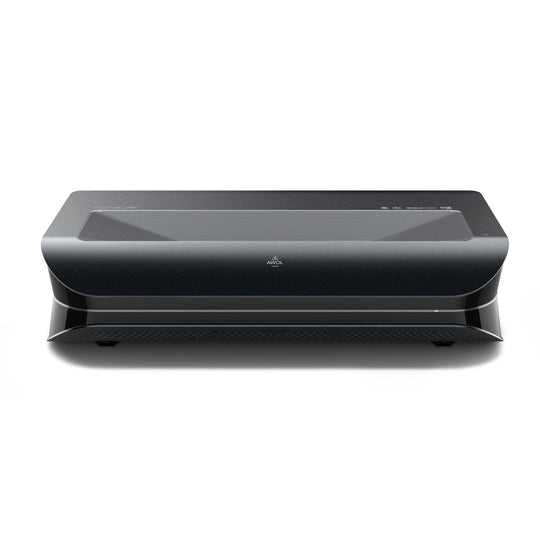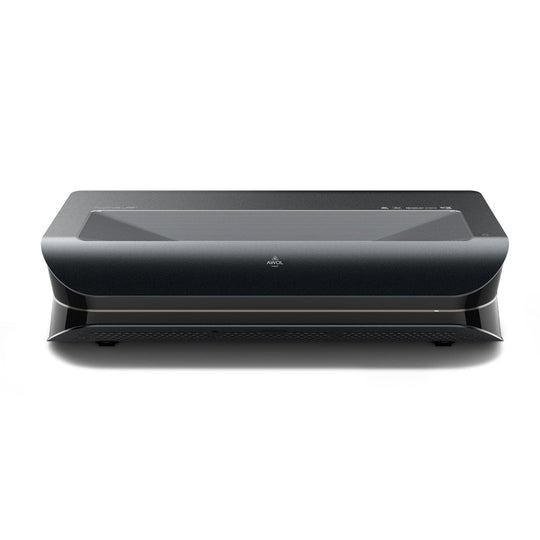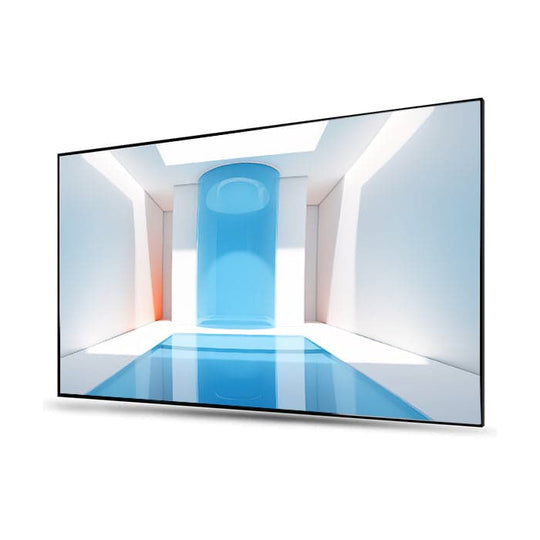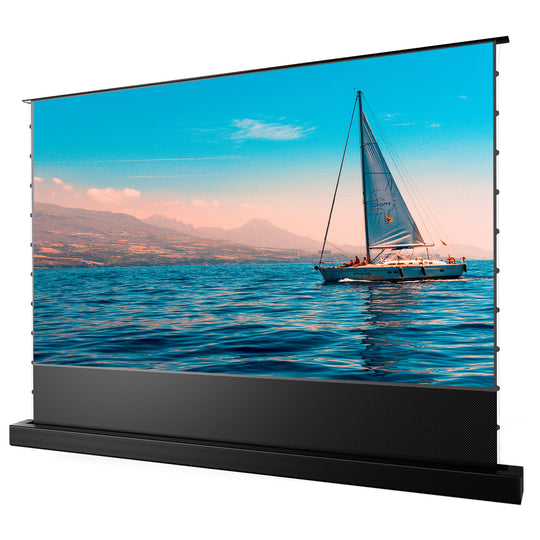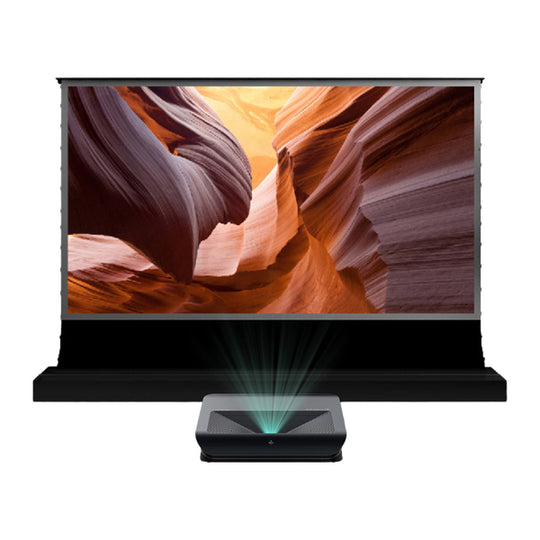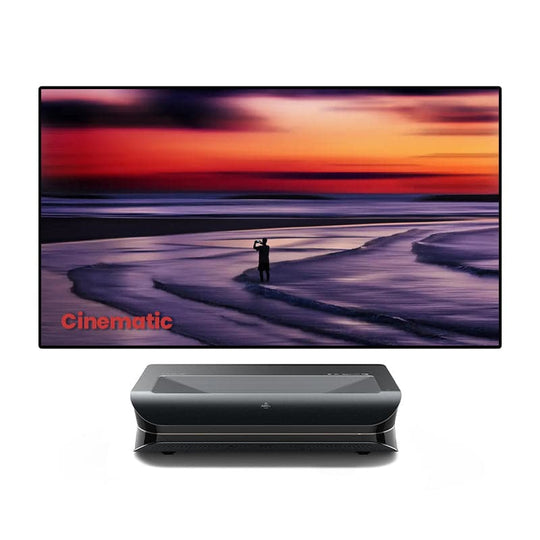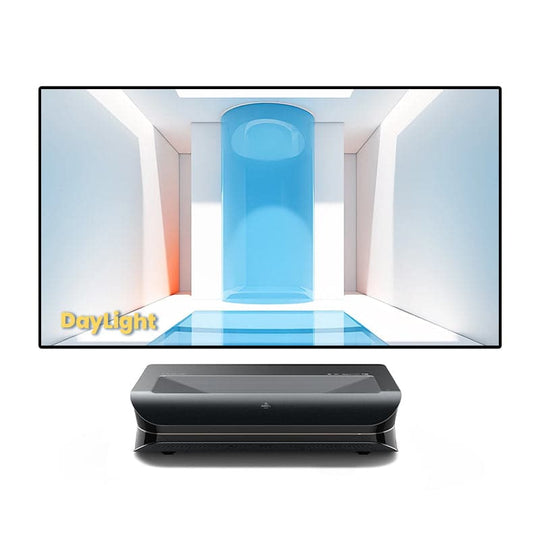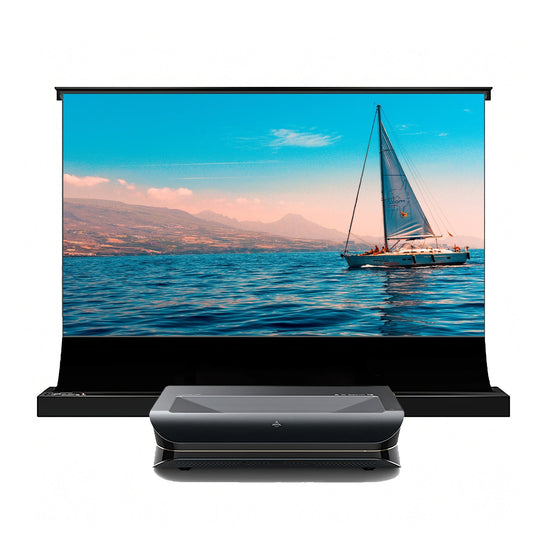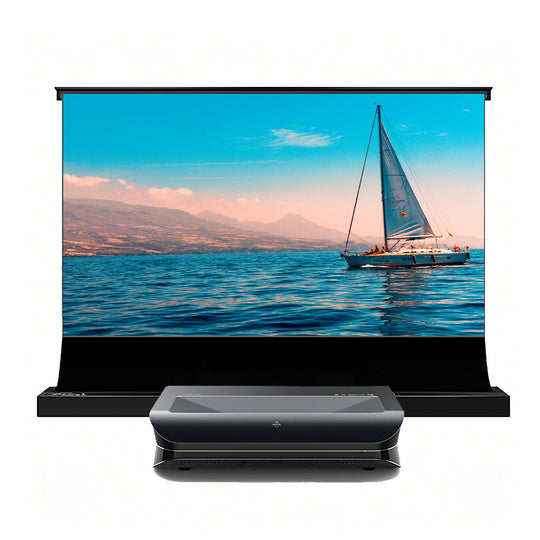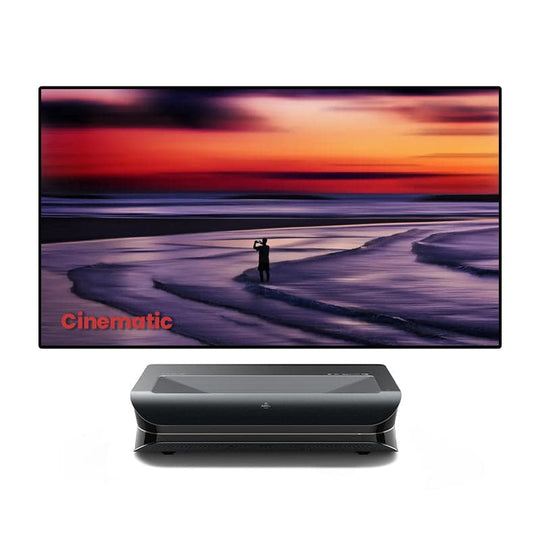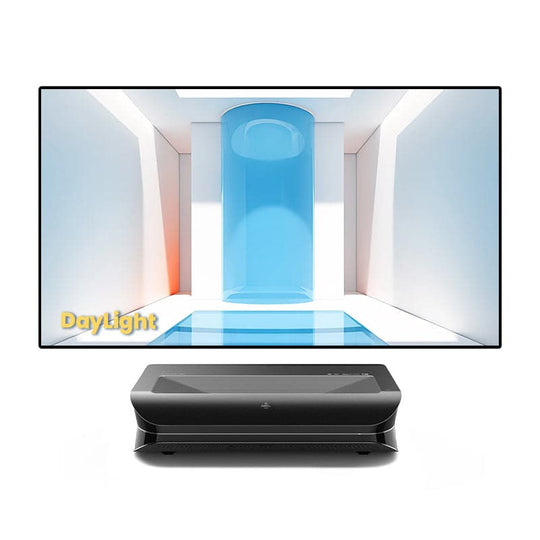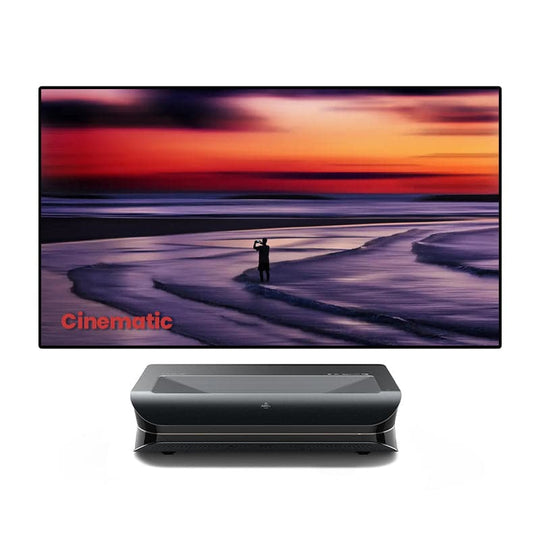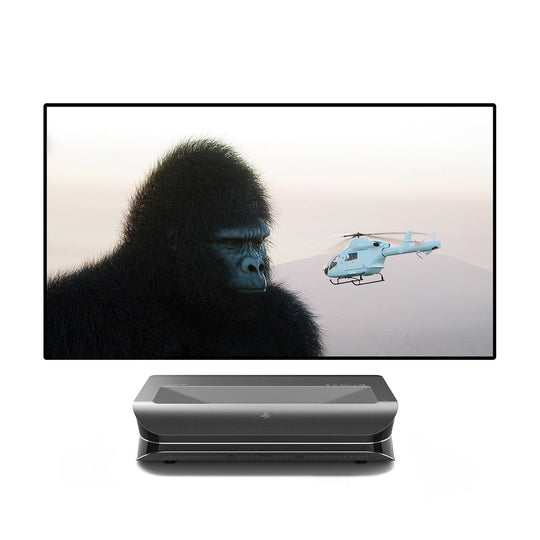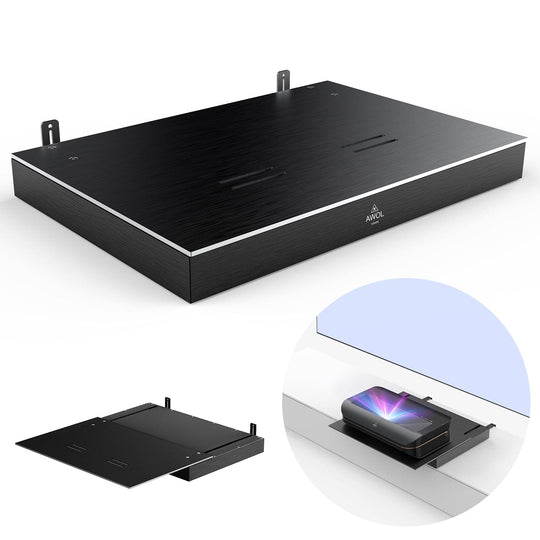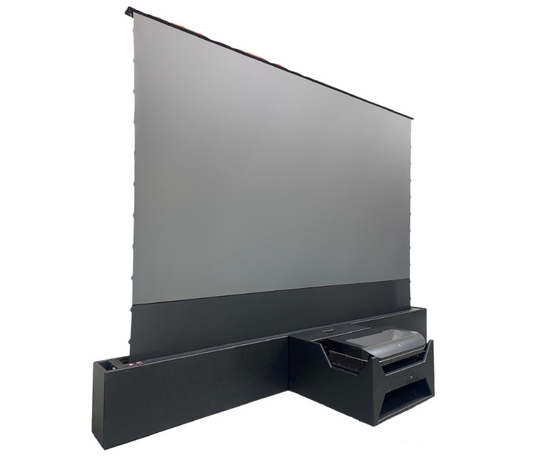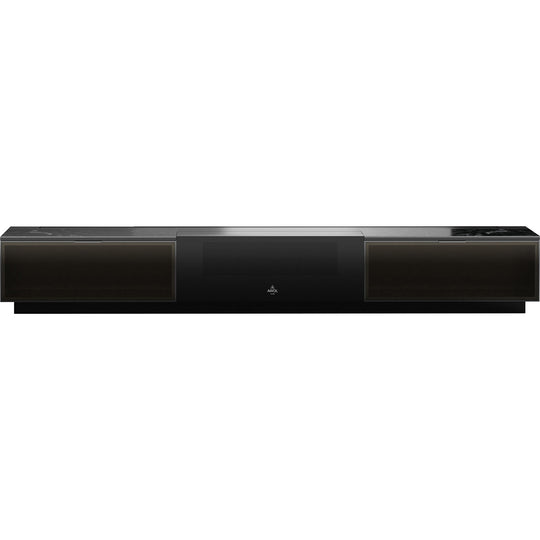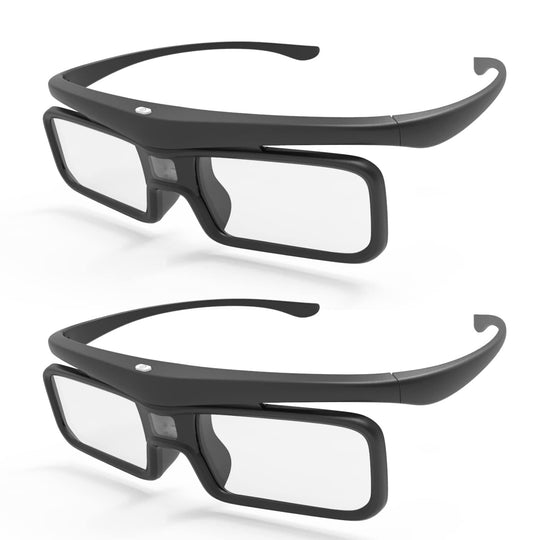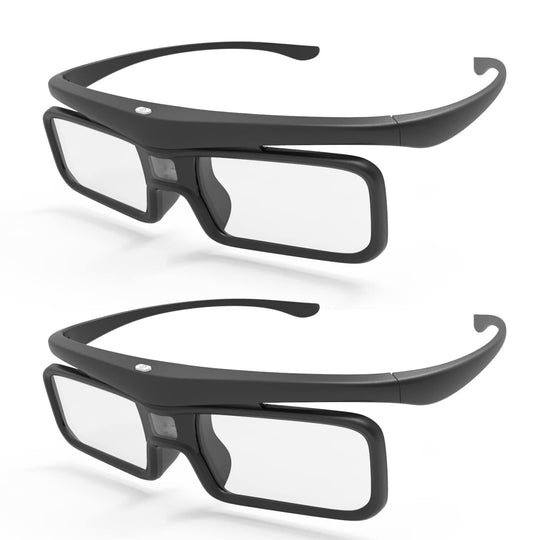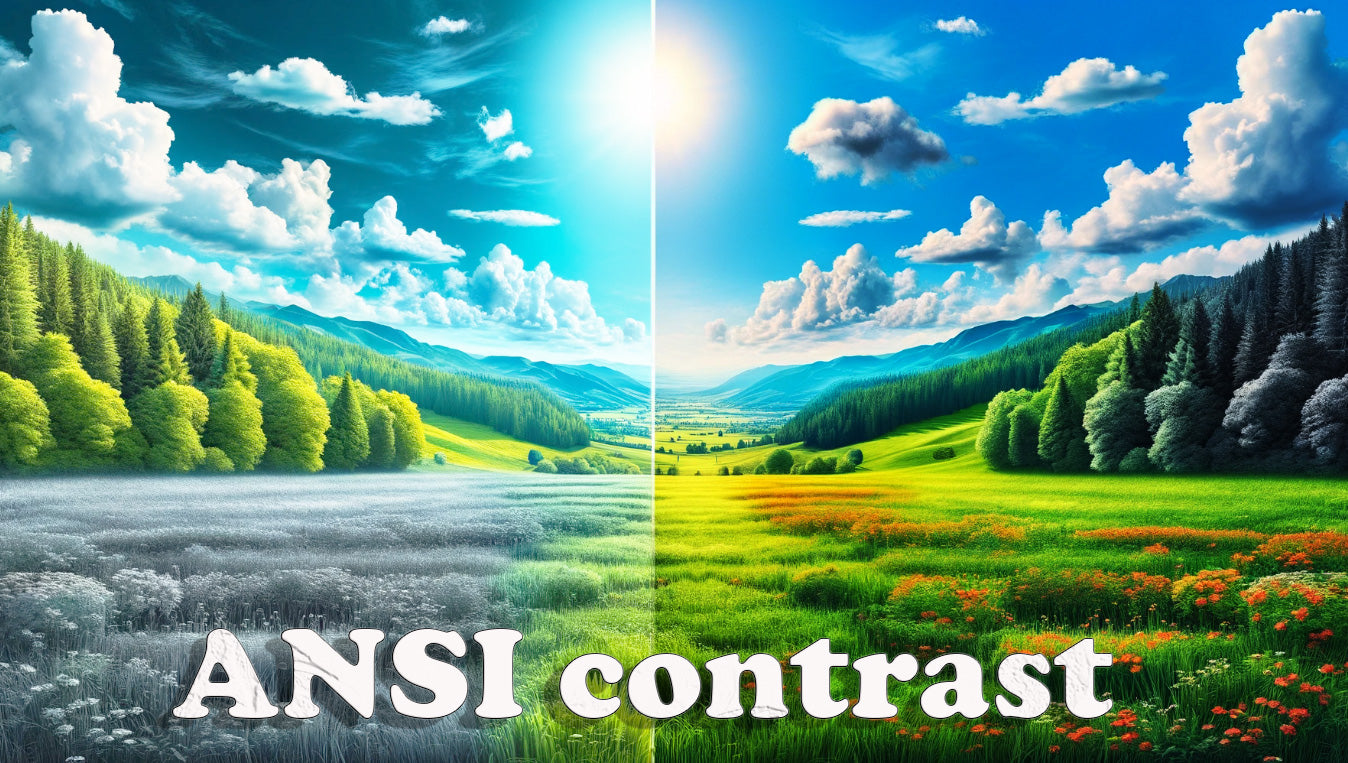Understanding reflective and emissive display technologies
To understand the benefits of UST laser projectors, it is important to know the difference between reflective and emissive technologies. Conventional LCD and OLED TVs are emissive, meaning they produce light directly from the screen and send it directly into the viewer’s eyes. This direct light can be very intense, especially in dark environments, and can cause eye strain and fatigue over long periods.
On the other hand, UST laser projectors use a reflective method. They project the light onto a surface, such as a projection screen or wall, which then reflects the light back to the viewer’s eyes. This two-stage process, in which the light first bounces off another surface before reaching the eyes, is similar to the way we experience the world naturally. For example, when we look at a tree or a building, we do not see the light emitted directly from these objects, but the light from the sun or other sources that is reflected from them.
Viewing without glares & reflections
One of the less discussed but very beneficial aspects of using UST laser projectors is the significant reduction in glare and reflections compared to conventional television screens. Televisions, with their glass surfaces, often reflect ambient light, causing glare that can be quite distracting. This is particularly problematic in bright environments or rooms with many windows.
TV "mirror" effect

On the other hand, the images produced by UST laser projectors are projected onto special screens or even normal walls, which have inherently less reflective properties. These matt surfaces scatter or absorb the light instead of reflecting it directly back, minimizing ambient reflections and making the image more pleasing to the eyes.
Laser TV anti-glare behavior

This glare reduction not only increases visual comfort but also improves content visibility, making it easier to enjoy detailed images without the interference of reflected light sources. With a UST laser TV setup, you can enjoy gaming or watching your favorite Netflix movie even at noon with the sunlight directly into the room without any distracting glare phenomenon.
The comfort of reflective vision
Reflected vision, as provided by UST laser projectors, is generally considered to be less stressful for the eyes than direct light from a television screen. Reflected light has a diffuse attribute that reduces brightness peaks, which can help minimize eye strain. This is particularly beneficial in environments where viewers watch content for extended periods, such as in a home theater.
In addition, the natural-looking feeling created by the reflective laser TV technology can result in more lifelike images. The feeling, when you're looking at the image projected by a laser TV, is as if you're looking through a window to the outside world, giving the viewer a sense of depth and realism that is sometimes lost with emissive displays. When you watch a movie on a reflective screen with a laser TV, you feel like you are watching something real, something natural, and that helps to engage you in the story the screenwriter wants to tell.
Choose the right technology for you
To summarize, the differences between reflective and emissive display technologies highlight the advantages of UST laser projectors in terms of comfort and natural viewing experience. By reducing glare and reflections, improving image clarity and reducing eye strain, these projectors create an excellent and relaxing environment for viewers.

Whether for movie enjoyment or gaming, knowing these key differences will help you choose the technology that best suits your home entertainment setup. The use of UST laser technology is a step towards a future where home cinema systems are no longer just “tools” for viewing, but portals to a more realistic and natural way of seeing the world.
AWOL Vision


